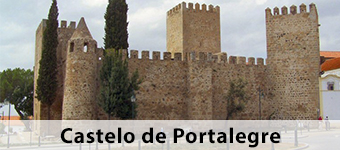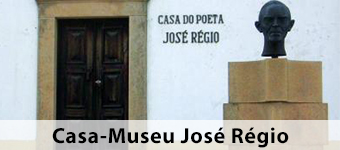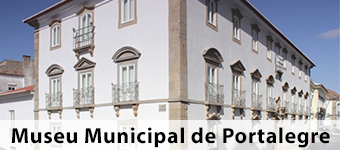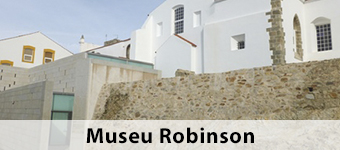Heritage Alto Alentejo
Alter do Chão
It is a Portuguese town and municipality of headquarters, the District of Portalegre. It is bordered to the north by Crato, south of border, southeast of Monforte, and southwest by Avis and west by Ponte de Sor. The Alter do Chão municipality is divided by 4 parishes: Alter do Chão, Chancellery, Cunheira and Seda.
- In Alter Pedroso, it is a tapir of the Megalithic period.
- Castle of Alter do Chão
- Alter do Chão the Archaeological Station / Ferragial d’El Rei is a landmark of the existence of a Roman settlement. This archaeological structure is visitable in the period May-September – 10:00 to 13:00 / 16:00 to 19:00. Guided tours: 11:00 and 16:00, ending on 25 December and 1 January.
- The Alamo House Museum consists of three small museums, the House and Garden of the Alamo – House Museum and Territorial Museum, Alter do Chão Castle and the Roman Villa Medusa House. The museum itself can be visited between 09h00 – 12h30 / 14h00 – 17h30 Summer: 10h00 – 12h30 / 15h00 – 19h30, ending on Monday.
- The Royal Stud Farm of Alter was founded in 1748 for breeding horses for the Royal during the reign of King John V. Currently the Lusitanian race is internationally recognized for its intelligence, elegant bearing, docility and courage, and to honor such it was created Stud Horse Museum Alter, a space dedicated to the Lusitano breed. It runs from Tuesday to Sunday and holidays 11:00 am 1st Visit 2nd Visit 15h00. Group visits (8), other times by appointment. And closed on days 1 January, 25 December and the second (except for holiday day or holiday eve coinciding with Monday).
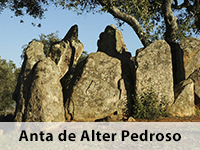
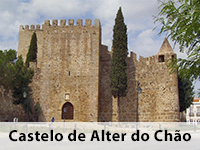
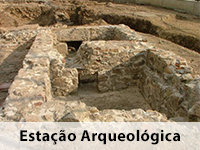
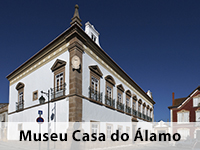
Arronches
It is a village in the district of Portalegre and county seat which is divided into three parishes, Assumption / Arronches, Hope and Monasteries. Limited to the north by Portalegre, east of Campo Maior, south of Elvas, west of Monforte and northeast of Spain.
- Relativamente a enoturismo, são apresentadas algumas adegas, que realização provas de vinho, consoante marcação: Adega Reynolds e a Adega Valle de Junco.
- Castle of Arronches
- The settlement of Hope is recorded by petroglyphs Junco Valley and Pine Monteiro, respectively and National Monument and Property of Public Interest, which led Hope to be nicknamed the capital of the Portuguese rock. These esperancenses paintings are in the Local Identity Interpretation Centre since 2013. It can be visited from Tuesday to Sunday 10h00-13h00 / 14h00-18h00, ending on Monday.
- Since the cave paintings of Lapa dos Gaivões or Junco Valley are located in Serra dos Louções in Serra de São Mamede Natural Park. These were discovered in 1916, and coming from the Neolithic and Chalcolithic periods.
- In 1995, during the celebration of World Children’s Day, the Crato county held an exhibition of old and traditional toys, the initiative of the Alto Alentejo Area Center. After understanding the high interest and receptivity, the municipality of Arronches received and supported the initiative. In 1997, “Building the Fortress” was reclassified and converted into a museum space. In 2002, on the 24th of June, the Museum (A) Play is opened. Opens its doors morning – from 10h to 13h. / Afternoon – from 14h to 18h and closed on Mondays and holidays.
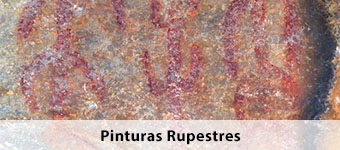
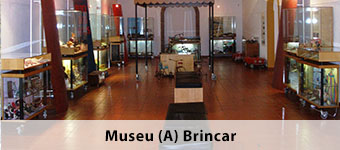
Avis
A village in the district of Portalegre, which is home to the city of 6 parishes, Alcórrego and Maranhão, Old Village, Avis, Benavila and Valongo, Ervedal, Figueira and Barros. This is limited to northwest of Ponte de Sor, on the south by Sousel, east by border and northeast of Alter do Chão.
- Francisco Abreu Callado was born in 1834 and was a founding patriarch of the “farm house”, which takes its name, and was one of the wealthiest families in the Alentejo in the late nineteenth century. Your Cosme heir Callado Fields created one of the most prestigious institutions of social support in 1948, covering not only Avis but the entire district of Portalegre, called Foundation Abreu Callado. This was born with socio-educational goals that have their employees and retired medical support and social advantages over the teaching of agricultural techniques focused on the children of workers in the current Professional School Abreu Callado. This foundation works from 2nd to 6th Friday from 09h00 to 13h00 and from 14h00 to 18h00. Saturdays and Sundays by appointment. In its cellar is possible wine tasting brand. Rural Abreu Callado Foundation Museum is open to the public from Monday to Friday 9:00 to 13:00 and 14:00 to 18:00. Weekend week by appointment.
- Castle of Avis
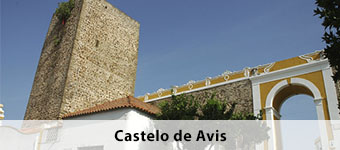
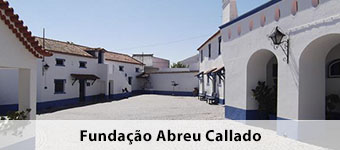
Campo Maior
It is a village in the district of Portalegre and county seat who rules over three parishes, Our Lady of Expectation, Our Lady of Grace of Degollados and St. John the Baptist. Campo Maior is bordered to the north and east by Spain, southeast of Elvas and west by Arronches. This village is considered the second town of the Alentejo behind Grândola.
- As regards wine tourism, Adega Mayor has its doors open to 2nd to Saturday from 09H to 13H and 14H30 to 18H30. Other possible times on request. The Sunday only open for groups and under consultation.
- Inaugurated on September 1, 2013, the House-Museum Santa Beatriz da Silva is the latest museological space of Campo Maior. This aims to be a space for reflection and evocation of the work, life and spirituality of the first Portuguese saint and founder of the Immaculate Conception Order, Santa Beatriz da Silva was born in Campo Maior, being a very venerated figure. This opens 3rd to 6th: 10h – 17h; Sat and Sun: 10h – 13h / 14h – 17h and closed on Mondays.
- Castle of Campo Maior
- Inaugurated on April 25, 2005, the Lagar – Museum D’Olivã Viscount Palace is dedicated to olive cultivation of Campo Maior, one of the most important agricultural activities in the region. It is the old oil mill of Viscount D’Olivã Palace, a building with a great heritage and historical value. This has been promoting olive cultivation, traditions and Campo Maior, through an educational component that explains the whole process, from the look of the olive to olive picking and its turn into oil. It is open from 3rd to 6th Fair from 10h00 to 12h00 and from 14h00 to 17h00 Saturday and Sunday from 14h00 to 17h00 Summer: 3rd to 6th Fair from 10h00 to 12h00 and from 14h00 to 18h00 Saturday and Sunday from 15h00 to 18h00; ending the 2nd Fair and holidays from December 25, January 1 and May 1.
- In Largo Roach, the House seat, the Field Open Museum Greater aims to be the first contact with the cultural heritage of the region, being a unique place to learn the history of the county, from its people, from prehistory to the present never forgetting the permanent link to Spain. Winter Open from 10h00 to 12h00 and 17h00 and 14h00h the summer of 10h00h 12h00 and from 14h00 to 18h00; closing the doors 2nd Fair and holidays from December 25 and January 1.
- A property of the Factory Church Parish of St. John the Baptist, the Museum of Sacred Art of Campo Maior offers a journey through the history of salvation, paintings, pictures, real estate and jewelery pieces, a collapsed collection by the various churches of the county, a unique estate of religious illustration of Campomaiorenses between the sixteenth and twentieth century. This museum is in the Chapel of Our Lady of Mount Carmel, open Tuesday to Friday 14: 00h to 16: 00h, Saturday and Sunday 10: 00h to 12: 00h; ending Monday and holidays 1 January, 1 May, 25 December.
- Belonging to the Delta Café, Café Museum is one of the rare museum spaces specialty, even though the only one in the Iberian Peninsula. This aims to disseminate the cultural world and the coffee history and the relationship between coffee and the company was founded. This is open from Monday to Friday, 09:00 H / H 13:00 – 14:30 H / H 18:30, Saturdays: 10H-13H and 15H-18H; closes its doors on Sundays and holidays.
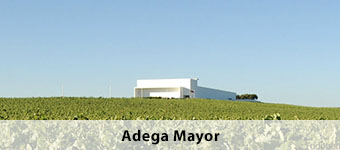
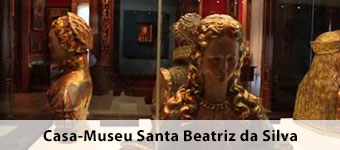
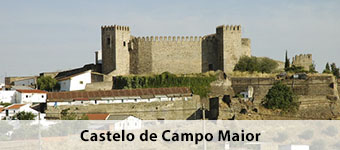
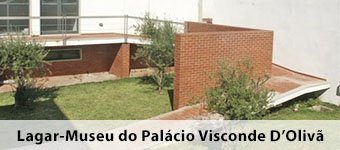
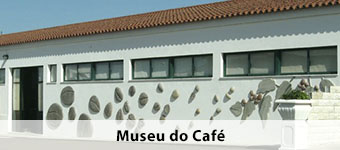
Castelo De Vide
It is a village belonging to the district of Portalegre and as county seat generates 4 parishes, Our Lady of Grace de Varzim and skeins, Santa Maria da Devesa, James the Greater, St. John the Baptist. These are limited by Spain northeast, east of Marvao, south of Portalegre, southwest of Crato and Nisa west and northwest. The Castelo de Vide village has a romantic character associated with its gardens and greenery, a mild climate and the proximity of the Serra de São Mamede, became well known as Sintra of Alentejo, name given by King Pedro V.
- A megalithic monument, the Dolmen of Melriça was considered as a National Monument, located in Tapada da Anta or Clean the Melriça, consisting of seven pillars.
- In the land of Coureleiros there are 5 tapirs, but the Dolmen of Coureleiros II has a larger, with a seven pillars chamber and its corridor are numerous fragments of the oldest structure and only two remain mainstays. This dolmen is classified as a National Monument.
- Castle of Castelo de Vide
- In order to promote the history of megalithic art in the region, the Interpretation Centre of Megalithic has multiple testimonies, the dolmens to menhirs in the region. During the winter open every day from 12.30 pm 09h30m- / 14h- 17h and 09h30m- 12.30 / 14h – 18h.
- Discovered in 1965, the menhir of the skein is the largest in the Iberian Peninsula, with four meters and a maximum diameter of 1.25 meters with a 15-ton weight. This monument of Neo-Chalcolithic period was classified as a National Monument, and over the years has obtained restoration work that allowed to restore their appearance.
- Inside the Church Santa Maria da Devesa, the Museum of Sacred Art Con. Albano Vaz Pinto has several pieces of the religious heritage of the Castelo de Vide council. Open from 09h00-12h45 / 14h00-18h00 and Saturdays from 09h00-13h00, ending on Sunday.
- In the fourteenth century, is believed to be a Jewish quarter in Castelo de Vide, from way to get to know its history, the Museum Centre of Castelo de Vide Synagogue, including the tabernacle with the cavities of the lamps of the Holy Oils, along with the holy scriptures, deployed in seven balls indicative of the six days that God created and the last day rested. In winter open from 09h30m – 13h / 14h- 17h and summer of 09h30m – 13 / 14h – 18h; closed on Monday.
- A cultural space in the Church of St. James Major, the Museum Centre of History and Architecture of Castelo de Vide Military aims to enhance scientific way, educational, cultural tourism of North Alentejo Fortifications. open winter it is the 09h30m- 12.30 pm, 14h- 17h and summer of 09h30m- 12.30, 14h – 18h.
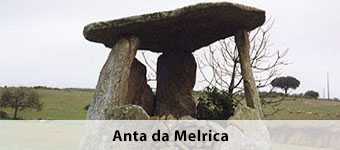
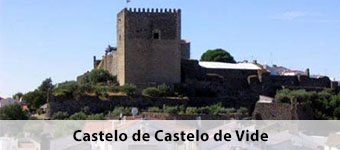
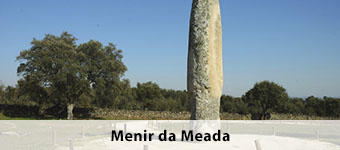
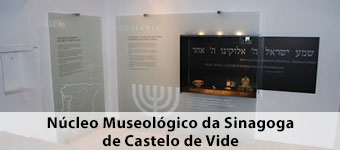
Crato
It is a town of Portalegre district, with headquarters in the city of 4 parishes, Forest Village, Crato and Martyrs, Flor da Rosa and Weight Valley, Gáfete and Monte da Pedra. The Crato is limited by Sparrowhawk, Nisa and Castelo de Vide northeast, east of Portalegre, southeast of Monforte and southwest of Alter do Chão and Ponte de Sor.
- Both known as Anta Grande do Tapadão or as Forest Village of Anta is dated the year 3000 BC, the second largest in Portugal. In 1910 this monument consists of seven granite pillars, with its granite slab hat, was classified as a National Monument.
- A space dedicated to religious art, the House-Museum Father Belo offers more than 900 allusive sculptures to the childhood and adolescence of Jesus Christ pieces collected by Father Belo, with paintings, nativity scenes and other ceramic pieces, this house is open from 4th Monday to Sunday from 09h30 to 12h30 and from 14h00 to 17h30 and closes doors of 2nd and 3rd Mondays, January 1st, 6th Good Friday, Easter Sunday, 2nd Easter Monday, May 1st and December 25th.
- Opened in 2000, the Crato Municipal Museum is divided into three floors: the ground floor is dedicated to the megalithic era and Roman period; the first floor is a room dedicated to the Order of Malta and a collection of the Monastery of Santa Maria de Flor da Rosa and the second floor is an ethnographic exhibition of agricultural and industrial activities Crato county. It runs from Wednesday to Sunday from 09H30M / 12.30 pm – 14H00M / 17:30; closing on Mondays, Tuesdays and all holidays.
- To promote olivoturismo, the Fava Lagar in Gáfete, has a selection of olive oils.
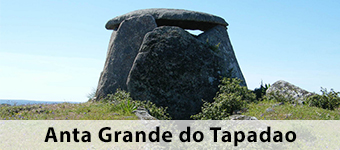
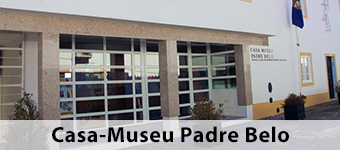
Elvas
A borderland town in the district of Portalegre and is home to the city of seven parishes: Assumption, help, Salvador and Santo Ildefonso; Caia, St. Peter and Alcazaba; Santa Eulalia; São Brás and St. Lawrence; Saint Vincent and Ventosa; Parishes union Barbacena and Vila Fernando and Parishes union Terrugem and Vila Boim. Limited by Arronches north, northeast of Campo Maior, for Olivenza and Badajoz southeast, south by Alandroal and Vila Viçosa and west by Borba and Monforte.
Despite the city being the capital Portalegre district, Elvas raiana city is the largest in the district. Because of its importance as a stronghold of the Portuguese border, and is just 8 kilometers from the Spanish city of Badajoz, Elvas was once the most fortified city in Europe, being named as Queen of the Border.
In 2013, September 16, Elvas and Badajoz signed a protocol of union and became the Eurocity Elvas-Badajoz, to attract more jobs, development and investment.
The city of Elvas presents the largest collection of bulwark fortifications, worldwide, with its walls and the historic center are a heritage set the June 30, 2012, it was declared a World Heritage Site by UNESCO.
- To promote ecotourism is presented Herdade das Village, open from 2nd to 6th Friday from 09h00 to 13h00 and from 15h00 to 17h00, with its wine tasting.
- Castle of Elvas
- Opened in 2007, the Museum of Contemporary Art of Elvas (MACE) is located in the old Mercy Hospital, being remodeled by architect Pedro Reis kept the traditional design of stumble walls white with yellow risk, something very characteristic of the architectural landscape Alentejo. With two floors, this room features exclusively contemporary Portuguese art, from exhibitions and youth work. This is a permanent exhibition based on the collection of elvense Antonio Cachola, along with other national artists, including Adriana Molder and André Gomes. It is open in winter on Tuesdays (winter) from 14h30 – 18h and (summer) 15h – 18h30; Wednesday to Sunday (winter) from 10h-13h / 14h30 – 18h and (summer) from 10h-13h / 15h – 18h30. Closed on Monday and Tuesday morning; Holidays January 1, Easter Sunday, May 1, December 25.
- To preserve the military heritage of Elvas, the old facilities of Infantry Regiment nº8 become the Military Museum of Elvas. Along with the former Convent of Santo Domingo and the Big House Barracks they contain part of the museum collection of the Portuguese Army. Open from 10 am-12h / 14h-17h and closed on Monday and public holidays on December 25 and January 1.
- At Fort de Santa Luzia, the Military Museum Fort of Santa Luzia home to six cores inside. This museum features a permanent exhibition to a young audience, with artillery and military weapons and other equipment to demonstrate the war and military history of the city of Elvas and all its importance. Winter runs from 10h-13h / 14h-17: 30h and 10h-13h summer of / 15h-19h. Closing doors on Mondays and holidays 1 January, Easter Sunday, May 1st and December 25th.
- In Central Cinema is the Municipal Museum of Photography John Carpenter, which houses several spaces and showrooms, as the room of the History of Photography, the Collector’s room and collection; with a small laboratory for the detection of black-and-white; a library focused on the theme of the photo and a bank of Elvas Military images, Religious, Monumental and other activities of the county, these are a collection of photography lovers. Opens its winter doors from 10h00 – 13h00 / 14h00 – 17h00 and summer from 10h00 – 13h00 / 15h00 – 19h00; ending Monday, January 1, Easter Sunday, May 1st and December 25th.
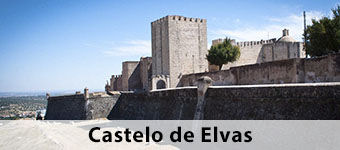
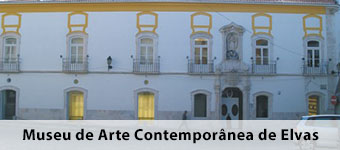

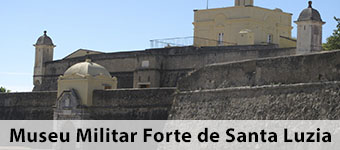
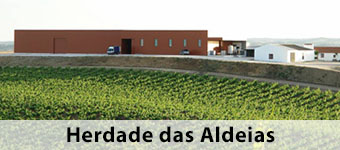
Fronteira
It is a town of Portalegre district and is home to the city of three parishes: Vide, Border and San Saturnino. It is a town bordered by Alter do Chão the north, east Monforte, Estremoz the southeast, by Sousel south and west Avis.
- The Monte da Cal Estate promotes wine tourism and the proof of its 2nd wine 6th Friday from 09h00 to 12h30 and from 14h00 to 18h00.
- On April 6, 1384, a historical battle was fought, a turning point for the history and future of Portugal in the battle of atoleiros, very close to the border, Nuno Alvares Pereira won the cavalry from Spain through a military tactic called “square tactic,” this English tactic proved to be very significant because there was no registration or injuries Portuguese dead, unlike the invading force, being defeated and his Castilian pride was hurt, giving new strength to the consolidation of Portuguese nation. In order to make this timeless moment, it was erected the Interpretation Centre Atoleiros battle. This provides visitors with a unique experience along a guided tour with different visual perspectives of the battlefield, thus understanding better the history and context of the protagonists in this pivotal moment for the Portuguese nation. It is open from 10.00 – 17.30 and closed Sunday and Monday.
- In Roman times, a spa was built in Vide, known as the Sulphurous Spa is a true oasis Alentejo. Located in the valley of the Ribeira da Vide, this set has three floors, which in addition to the treatment zones contains reception areas, indoor pools, cooling zones, gym and an area of traces of ancient thermal area. Its waters have been used for over four thousand years to treat osteoarticular illnesses, such as rheumatism, respiratory diseases such as asthma, bronchitis, sinusitis, rhinitis, and skin diseases.
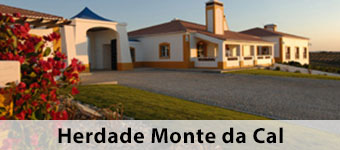
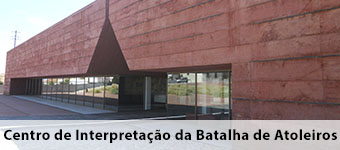
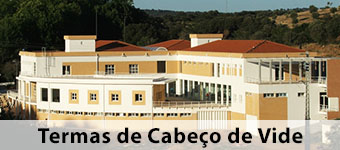
Gavião
A village in the district of Portalegre and 4 parishes of the municipality of headquarters: Belver Comenda, Gavião and Watchtower and Margin; the municipality of Gavião is limited by Mação west and north west also by Abrantes, by Nisa east, Crato the southeast and southwest pro Ponte de Sor.
- Castle of Belver
- In Belver, the Soap Museum was opened in April 2013, in the former elementary school Belver. The museum seeks to honor the saboeiros of this town and its long soap production tradition. Being an abundant region in raw materials for the soap industry, Belver developed from the second half of the sixteenth century. Mole and Stone Soap was the two saboarias recognized throughout the kingdom and a royal soap factory was installed. Over time, the workers of this factory were creating their craft industries, which have this generation of business generation. The Soap Museum has in its infrastructure all stories related to the soap and how Belver increased business and revolutionized a kingdom and small families. It is open from Wednesday to Friday 10: 00h to 17: 00h / Saturdays and Sundays from 14: 00h to 18: 00h; ending on Monday.
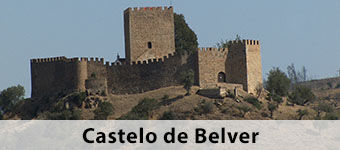
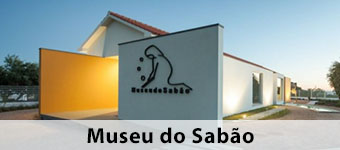
Marvão
It is a village in the district of Portalegre and as county seat generates four parishes: Beirã. Santa Maria de Marvão, Santo António das Areias and San Salvador Aramenha. They are limited by Spain to the north and east, south and west by Portalegre and northwest of Castelo de Vide. The villages and Marvão mountains are included in the list of candidates for UNESCO World Heritage Site since 2006.
- Castle of Marvão
- In the heart of the Natural Park of Serra de São Mamede, there are the ruins of the Roman city of Ammaia, an area of great beauty and heritage value. With the archaeological excavations, which began in 1995, has been discovered about 3,000 m 2 , it is thought that the original town has more than 20 hectares. In the Museu Ammaia City is presented everyday life of the Roman people and their built structures, including the baths, temples and houses. Much of the area occupied by the ruins are in the land of the City of Ammaia Foundation, which aims to study, restoration and preservation of this heritage that has been classified as a National Monument.
- Housed in the Church of Santa Maria, since 1987, the Municipal Museum of Marvão contains parts offered or provided by the population, in order to make known the history of the county from the Paleolithic to the twentieth century. These pieces are sacred art content, archeology, ethnography and armory, which constitute the core of the museum.
- The Cova mill is in process of reconversion to cultural facilities as a center of culture, interpretation and tourism promotion. As Interpretation Centre aims to portray through a permanent exhibition on the grind, a vital economic activity for the region; as Cultural Centre aims to promote and support local and regional artistic creation with temporary exhibitions and a reading area and computer support; and as Tourist office aims to promote touristically the county and region, placing information about routes to do, places of interest to visit, cultural entertainment, gastronomic and commercial. The Cova Mill as historical, cultural and dynamic center will complement the Leisure Centre toll. The mill is open from 10h00-13h00 / 14h00-18h00, ending on Monday.
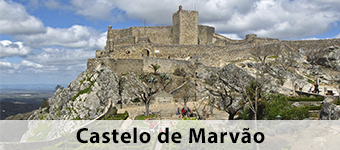
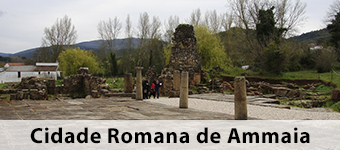
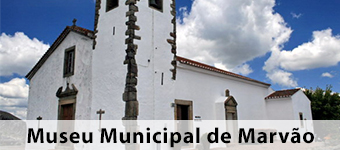
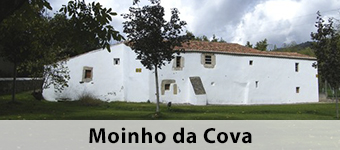
Monforte
It is a village in the district of Portalegre and seat of the municipality of 4 parishes: Assumar, Monforte Santo Aleixo and Vaiamonte. It is bordered by Crato Portalegre and west and north east by Elvas and Arronches, for Borba and Estremoz the southwest, west and northwest by Frontier for Alter do Chão.
- In order to promote eco-tourism in this region it is highlighted Perdigão Homestead and Agricultural Society of Herdade da Curved Tower, both have wine tasting, by appointment.
- In the Sierra de Falperra, is the Church of St. Mary Magdalene, built by Archbishop D. Rodrigo de Moura Tele, this monument in baroque style, preceded by a wide staircase and its also inside Baroque is richly decorated in that stands out the pulpit and tile flooring eighteenth century ceramist Policarpo de Oliveira Fernandes. It is open in winter on weekdays from 9: 00h – 12: 30h / 14: 00h – 17: 30h; in the summer on weekdays from 9: 00h – 12: 30h / 14: 00h – 17: 30h and the end-of-week of 0: 00h – 13: 00h / 14: 30h – 17: 30h. Closing weekends Weekend in January, February and the last two weekends, week of December.
- Within walking distance of the road linking Monforte to Alter do Chão. In Roman times, this road was the main which established connection with Olisipo (Lisbon) and Scallabis (Santarém) to Emerita Augusta (Évora) through Albelterium (Alter do Chão), and along this road lay-Palm Tower, a Roman villa, occupied since the first century AD, to the Visigoth period. In 1947, this village was discovered when a plow collapsed in capital, leaving to view a mosaic of pebbles. Ongoing excavations in these Roman ruins, led to it being found a floor colorias stones with figures, called mosaic of the muses, other objects that were found highlights the mosaic of horses and an inscription in honor of Mars. This ruin is open to the public in the summer of 10h00-13h00 / 16h00-19h00 and 10h00-13h00 of winter / 14h00-17h00, ending on Sunday, Monday and holidays.
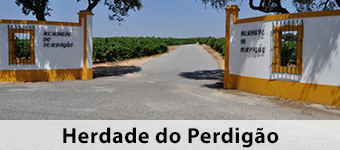
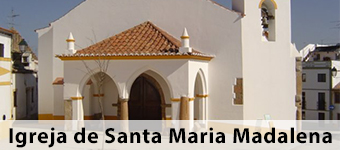
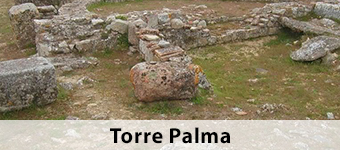
Mora
It is a village in the district of Evora and as county seat generates 4 parishes, Brotas, Cabeção, Mora and Pavia. The municipality is limited to the north by Ponte de Sor, northeast of Avis, east of Sousel, southeast of Arraiolos and to the west by Coruche.
- Quinta de Chaves is a homesteads example in Mora where you can do wine tasting.
- The Mora River Aquarium is a theme park that was born on February 11, 2001, the first large freshwater aquarium in Europe. In order to create a device that would give answers to scientific, cultural and leisure, recreating an aquatic universe that can consolidate an educational and environmental aspects.
- The Anta Chapel of St. Dinis also known as Dolmen of Pavia is a funerary monument also used as a chapel, and on its front altar are eighteenth century and Baroque tiles. This dolmen is one of the largest in the Iberian Peninsula.
- Housed in the former home of the painter Manuel Ribeiro of Pavia, this house-museum includes works of authorship, from drawings, illustrations and watercolors. Manuel Ribeiro of Pavia is an exponent of Portuguese neorealism, his works can highlight the illustrations of Alves Redol books and in 1950 published a cartoon album called “Lyrical”. This house museum is open from Tuesday to Saturday in the summer from 09h00 to 17h00 and in winter from 10.00 to 18.00. Ending Sunday, the 2nd Monday is all holidays.
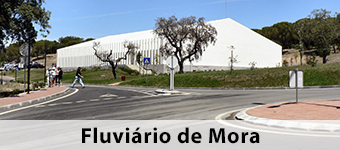
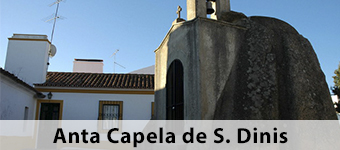
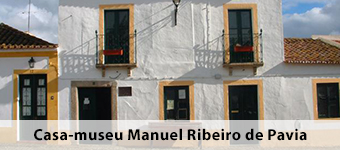
Nisa
It is a town of Portalegre district and is home to the city of 7 parishes, Alpalhão; Arez and Amieira do Tejo; Holy Spirit, Our Lady of Grace and St. Simon; Montalban; Santana; Matthias and Tolosa. This municipality is bordered by Vila Velha de Ródão west and north by Spain northeast, southeast of Castelo de Vide, for Crato south, southwest and northwest by Gavião by Mação.
- Castle of Nisa
- The Anta I Gens is a funeral tapir run with five pillars, with a slight slope that can withstand the hat, by camera and a door that separates the structure of the hall is still visible a few stones.
- The Museum of Embroidery and Clay is a space that aims to make known the materials used in the manufacture of linen and production of embroidery and lace. There are two play areas, including the kitchen and bedroom traditional Alentejo. There is still a archaeological collection and a collection of agricultural implements. Also belonging to the museum, there are several pieces of clay. Open from Tuesday to Sunday in the summer from 10 am /12.30h – 14h / 18h and in winter from 10 am / 12h30 – 14h-17:30. Closed on Monday and holidays: Christmas Day, New Year’s Day, Municipal Holiday (2nd Easter Monday) and Easter Sunday.
- In Alentejo plains, the Spa of Nisa Fadagosa invite not only for your leisure but also rest and enjoyment of all Alentejo beauty involved. In 1989, it developed a medical-hydrological study on the characteristics of the water and the therapeutic valence, demonstrating the need to purchase equipment and expand facilities to improve the provision of treatment of people and other pathologies.
- Castle Amieira do Tejo was erected during the reign of King Afonso IV, around 1350, the Order of St. John of the Hospital of Jerusalem, whom King Sancho II donated the land in the thirteenth century. In 1440, during the reign of Peter, this possession ended due to the prior of the order have chosen Leonor of Aragon, not Pedro de Portugal, involving forces of Castile. With the earthquake of 1755, the castle was damaged, requiring restoration, but only in the mid-twentieth century, and already ranked as a National Monument, obtained restoration, the Directorate General for National Buildings and Monuments.
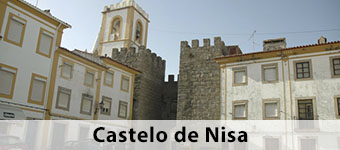
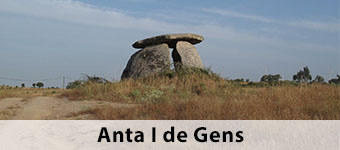
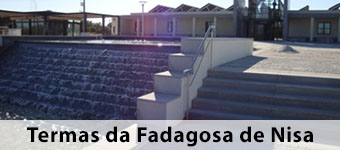
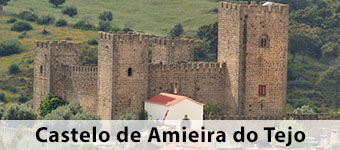
Ponte de Sôr
It is a town in the district of Portalegre and seat of the municipality of 5 villages, Foros de Arrão; Galveias; Longomel; Montargil and Ponte de Sor, Tramaga and Goshawk Valley. The municipality is limited the northeast by Gavião and Crato, east of Alter do Chão, southeast of Avis for Mora south, southwest of Coruche and northwest by Chamusca and Abrantes.
- In Tramaga, near the Sor river are trundle mills, medieval historical roots, which is related with the natural surroundings.
- On Liberty Avenue in Ponte de Sor, is the Arts Centre and Culture and Ponte de Sor, a multidisciplinary space, which houses the Centrum Seven Suns Seven Moons, the foundation of Border and Alorna home, Earth Theatre, the Municipal Library, the Museum Center and Educational services, dedicated to various culture services, contemporary art, from theater, dance, painting, sculpture and photography.
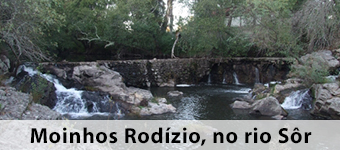
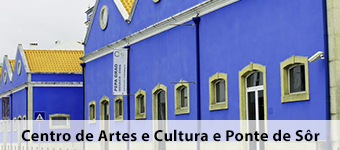
Portalegre
It is the capital city of Portalegre district, as county seat manages 7 parishes, Alagoa; Alegrete; Fortios; Reguengo and São Julião; Ribeira de Nisa and careers; See and St. Lawrence and Urra. This municipality is bordered to the north by Castelo de Vide, Marvão by northeast, east by Spain, south of Arronches and Monforte and west of Crato.
- Castle of Portalegre
- In order to promote wine tourism highlights are three entities, the Adega Cooperativa de Portalegre, Francisco B. Fino, Sociedade Agrícola, Lda. And Tapada Keys. In all you can do wine tasting.
- Installed in housing Jose Regio, which formerly have been an annex to the Convento de São Brás, still containing the chapel also served as headquarters during the Peninsular Wars, and is currently the Casa-Museu Jose Regio. Jose Regio enlarged his collection and was renting other areas of the house, until it became only guest. In 1965, he sold his collection to the Municipality of Portalegre, provided that the purchase the house and restore it and turn it into a museum. Their collections are assigned by 17 exhibition halls, the estate covers several areas, from sculpture, painting, stoneware, furniture, metals, textiles, coins / medals, records, pastoral work (bread markers and cakes, cornas, powder horns, chavelhas and spoons) and wrought iron. Apart from this, the House-Museum contains a varied literary collection, a collection the like Jose Regio, lover of antiques and collecting, especially the sacred art. This house museum is open Tuesday to Sunday from 09h30 to 13h00 and from 14h30 to 18h00 and ending Monday, January 1st, 6th Good Friday, Easter Sunday, May 1, 24 and 25 December .
- The Municipal Museum of Portalegre reopened its doors in May 2012 as Cultural Space, with a new unit, received new booking rooms and temporary exhibitions, a shop and cafeteria. The museum was established in 1901 and occupies a noble house of the sixteenth century, since 1956, near the Cathedral. This new space offers a rich collection of two former convents of Portalegre, Santa Clara and San Bernardo and private donations. The most outstanding collection is the Sacred Art, with different parts, from terra cotta ivory. also has an important collection that traces the history of Portuguese faience from the seventeenth century until today. This space is open from 09h00 – 13h00 / 14h30 – 18h00; closing on Monday and holidays: January 1st, Good Friday, Easter Sunday, May 1, 24 and 25 December.
- Open to the public since 2012, the Robinson Museum and Center of the Church of San Francisco, is a cultural and museum space that aims to recover the structures of the old convent church and restoration of various components of coating and architectural and landscape rehabilitation Robinson space. It is open from 10.00-12.30 / 14h00-18h00 and closes on Sunday, Monday and holidays.
